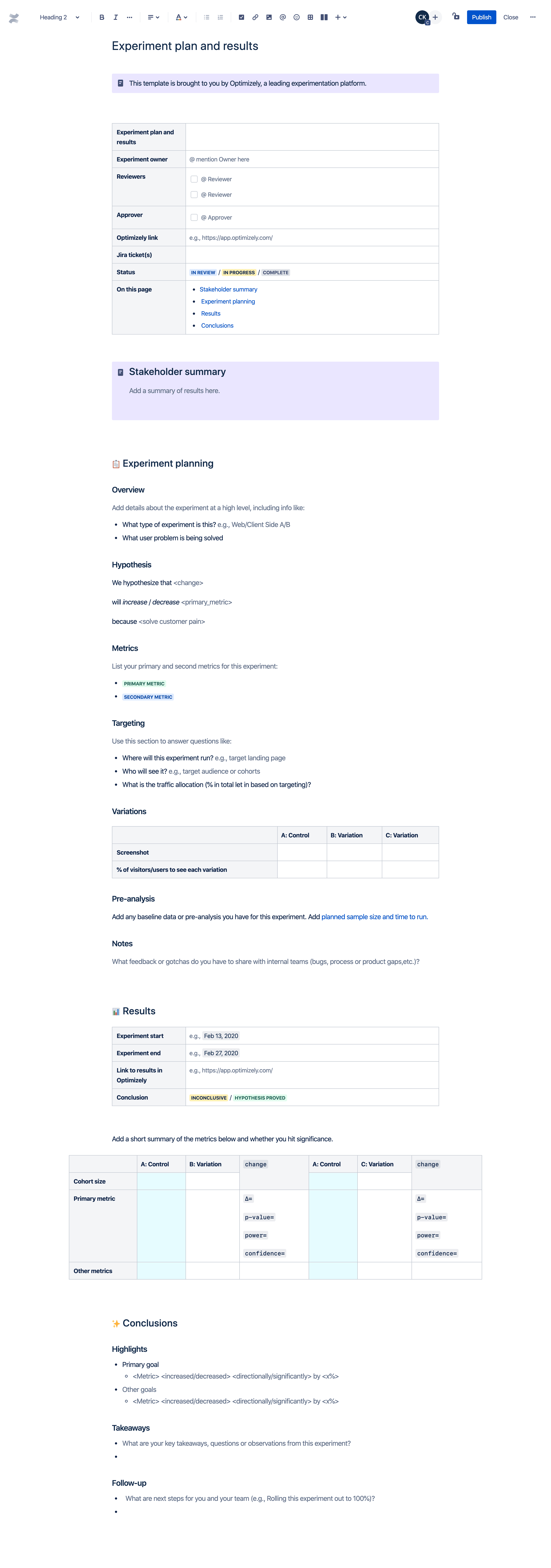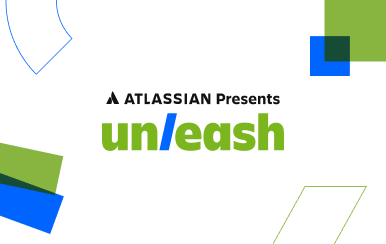Experiment plan and results template
by Optimizely
Streamline your process and improve your business

Your team is full of ideas that they’d like to test out to learn about your customers and advance your business, and you need a process for collecting those suggestions. Optimizely, the leading experimentation platform, created this super helpful template your team can use to submit experiment ideas (with all of the relevant details). Using this template, you’ll create a single source of truth about your experiments and maintain a catalog of previous experiment data that you can use to fuel learning and shape future tests.
How to use the experiment plan and results template
Step 1. Cover the basics
The top table of the template has space to outline the basics – including the name of the experiment, the experiment owner, reviewers, approvers, and the status. Make sure to @ mention team members so they’re notified about their involvement, and include your Optimizely link for easy reference.
Step 2. Set a plan for your experiment
If you remember anything about the scientific method from school, then you know that there are quite a few steps that happen before the actual experiment. Use the Experimentation planning section of the template to lay the foundation for success. Provide a high-level overview of the experiment, establish your hypothesis, define your metrics and targets, establish your variations, and include any baseline data or notes you might need to refer to. As eager as you might be to jump right in with the testing, investing time in planning will set you up for a lot of learning.
Step 3. Outline your results
You ran the experiment and the results are in. Document them in the Results section of the template. Jot down your experiment start and end date, the link to your Optimizely results, and a short summary of the metrics that you monitored. Make sure you also assign a clear conclusion (such as “inconclusive” or “hypothesis proved”) here, so everybody can get the results of that experiment at a glance without wading through all of the details.
Step 4. Draw conclusions
Your results shouldn’t be the end of the road. You want to learn from each and every experiment (whether your hypothesis was correct or not), which means you need to identify some firm outcomes. In the Conclusions section of the template, highlight your primary goals and other metrics for easy reference. Then, write down key takeaways, questions, and observations and outline any next steps that your team should take. This means you’ll go beyond learning and actually use those findings to improve your business.
Optimizely is the world’s leader in Progressive Delivery and Experimentation. Its platform includes technologies for modern software development, such as feature flags, progressive rollouts, A/B testing at scale, AI-powered personalization, and real-time analytics.
More software development / IT templates View all
-
Lucidchart
AWS architecture diagram
Visualize your infrastructure to better identify weaknesses and pinpoint places for refinement.
-
Atlassian
Design your ideal workweek
Provide step-by-step guidance for completing a task.
-
Atlassian
DevOps runbook
Prepare your operations team to quickly respond to system alerts and outages.
